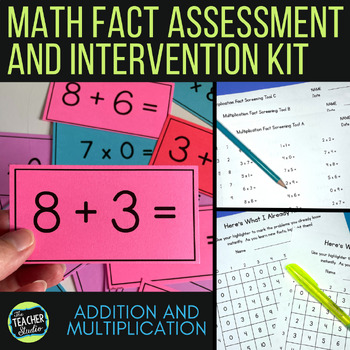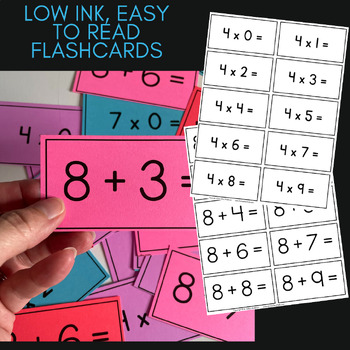Math Fact Fluency Assessment & Fact Fluency Tracker - Addition & Multiplication
- PDF
What educators are saying
Description
Need help with fact fluency activities? If you are like me, you have a number of students in your class who still don't know their addition and multiplication math facts. They didn't know them last year. They didn't know them the year before. They think they are "bad at math" because of their inability to quickly retrieve these basic math facts.
Don't get me wrong--math fact fluency is important...and it sure makes "big math" an awful lot easier!
So what is this resource? This resource gives you tips and suggestions for how to identify students who are struggling with their basic math facts and a method by which you can start to build their confidence, organize your instruction, and gives you a math facts tracker to check for growth!
(NOTE: This is focused on addition fact fluency and multiplication fact fluency. When students become fluent with these operations, they can use their strategies to solve subtraction and division problems. You will get the most "bang for your buck" with addition and multiplication!)
Included:
- a full blog post explaining the method
- photos to make directions even more clear
- sets of addition and multiplication flashcards
- colored tags for their fact practice bags
- 3 addition and 3 multiplication fact screeners
- answer keys for fact screeners
- facts I know” grids for math fact tracking and assessment
Use this with your entire class or just students you are concerned about. Here are a few suggestions!
- Have students practice their unknown facts at a math center or a part of guided math.
- Involve families by sending cards home to practice.
- Set aside 5 minutes daily to work on fact fluency.
- Have students work with partners that have similar needs.
- Set aside a short time once every few weeks to have students do a self-assessment and check their progress.
NOTE: This does not include 11 and 12 facts. There is no strong mathematical reason for memorizing these so they are not the focus of this intervention resource.
Looking for other math fact help?
Get teaching tips, games, and activities to help teach multiplication facts with this MULTIPLICATION FACT KIT!
Need some basic games to try to build addition facts? Try THIS BUNDLE!
Want even MORE games? Try this collection of partner games! Low ink, ready to print!
----------------------------------------------------------------------------------------------------------
All rights reserved by ©The Teacher Studio. Purchase of this resource entitles the purchaser the right to reproduce the pages in limited quantities for single classroom use only. Duplication for an entire school, an entire school system, or commercial purposes is strictly forbidden without written permission from the author at fourthgradestudio@gmail.com. Additional licenses are available at a reduced price.





